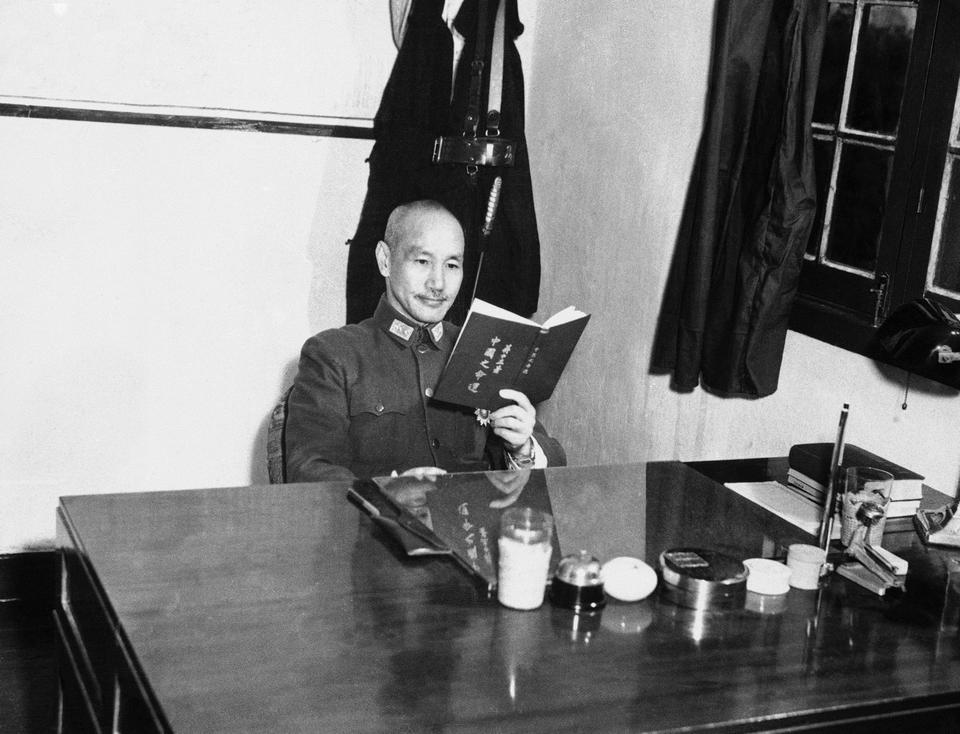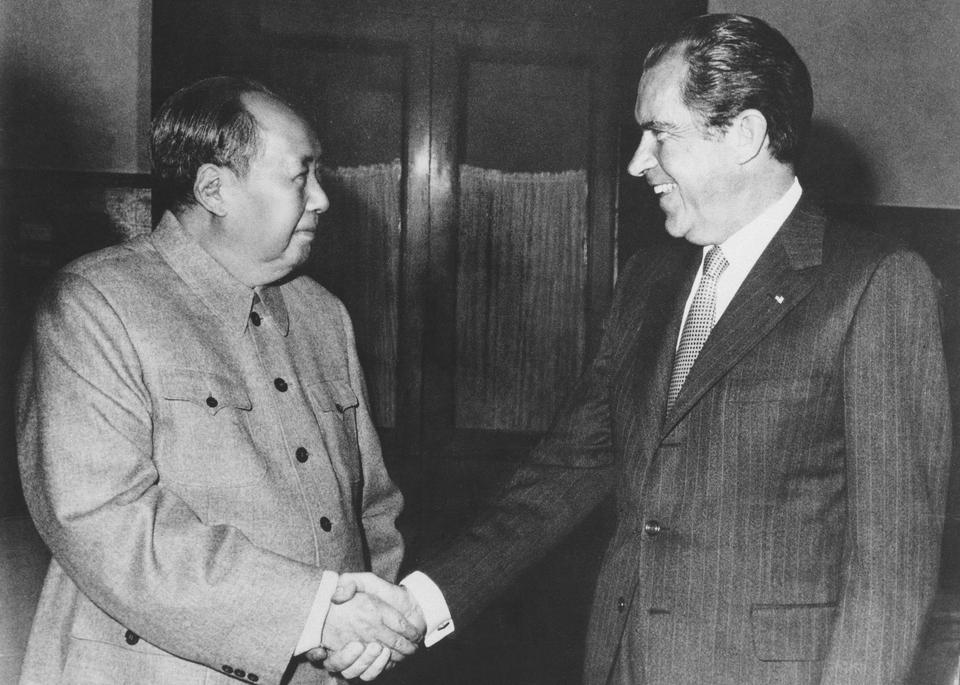Since the US embrace of the One-China Policy, which accepts Beijing’s sovereignty over all Chinese lands, Washington has followed a strategically ambiguous policy in regard to Taiwan.
US House Speaker Nancy Pelosi’s visit to Taiwan, a largely unrecognised island state established by anti-communist Chinese dissidents in 1949, has visibly angered the world’s largest Communist-ruled country.
While the US has supported Taiwan both militarily and economically since the communist takeover of China in the late 1940s, Washington has also been careful not to antagonise Beijing by not recognising Taipei as an independent state. The US describes its connection with Taiwan as “a robust unofficial relationship”.
But Pelosi’s high-profile visit to Taiwan appeared to have compromised Washington’s endorsement of the One-China Policy, which advocates that the People’s Republic of China (PRC) is the sole representative of the world’s biggest population. China views the visit as a contradiction of the US’s avowed stand that it does not “support Taiwan independence”.
China has issued stark warnings against Pelosi’s visit before and after the top American congresswoman’s landing in Taipei. Prior to Pelosi’s Asia tour, President Joe Biden also needed to talk to his Chinese counterpart Xi Jinping to pacify Beijing on the Democrat’s visit to the self-ruled island.
Despite Beijing’s fierce opposition, Pelosi went ahead with her visit to Taiwan even as the American media reported hesitantly how her Asia tour might complicate both US-China connections and Washington’s strategically ambiguous policy toward Taipei. Following Pelosi’s visit, China has been conducting large-scale military exercises, effectively encircling the island.
So, why does the US care about Taiwan so much? Let’s look at US-Taiwan ties in a historical context:
US backs Taiwan’s founding
In 1949, Chiang Kai-shek, Taiwan’s founding father, who was also a top nationalist leader in China before the communist revolution forced him and his supporters to flee the island, established Taiwan, claiming that his ‘Republic of China’ represents the whole China.

While the US did not recognise Taiwan’s sovereignty over mainland China, Washington protected Taipei against Beijing through several crises between the two estranged powers.
During the 1950 Korean War, Taiwan became a US ally and American forces fought the Chinese military, which had backed the communist Korean forces. Washington also deployed its Navy in the Taiwan Strait to protect its ally against any possible attack from mainland China.
The US backed Taiwan against China during two Taiwan Strait Crisis in 1954 and 1958, when Beijing attacked some Taipei-controlled islands close to the mainland. In the first Taiwan Strait crisis, Taipei lost some of its islands to China, but in the second crisis, it defended its islands, Kinmen and Matsu, against Beijing’s artillery attacks using US-supplied weapons.
US-China rapprochement complicates ties
Until the early 1970s, US-China ties had gone through different tensions due to the Cold War in which Washington and the communist bloc, which comprised China and the Soviets, competed with each other to claim global supremacy. As a result, between the 1950s and 1970s, the US strongly backed Taiwan against China.
But in 1972, US President Richard Nixon visited Beijing in an unexpected move considered as a breakthrough between the two giants. Nixon met his Chinese counterpart and launched America’s famous campaign ofthe opening of China, which aimed to free Beijing from Soviet influence to weaken Moscow’s hold on communist movements.

US-China rapprochement attempts reached the peak in 1979 when Washington embraced the One-China Policy. But this also left the US’s Taiwan policy in a grey zone— now Washington accepts Chinese sovereignty over Taiwan but continues to have strong ties with Taipei.
Post-One-China Policy period
The year Washington embraced the One-China Policy also marked the crucial American legislation of Taiwan Relations Act, which has institutionalised Washington’s ties with Taipei since then.
Taiwan’s political future should be decided by peaceful negotiations with China, according to the US law, which created an interesting outlook for Washington's relations with Taipei, guaranteeing that in case of a military attack against the largely unrecognised country, the US will defend it. After the American embrace of the One-China Policy, Beijing also proposed a similar approach to the US, offering “peaceful unification” with Taiwan.
In 1982, the Reagan administration issued the country’s Six Assurances in regard to Taiwan’s protection, pledging not to make any change on the 1979 US law.
With the Taiwan Relations Act, the US government created the American Institute in Taiwan (AIT), an NGO, which coordinates Taipei-Washington ties, representing American interests in the dissident island. The AIT, which is funded by the US State Department, provides citizen and consular services to both Taiwanees and Americans, functioning like a diplomatic mission.
On the other hand, Taiwan organises its connections with the US through the Taipei Economic and Cultural Representative Office (TECRO) in Washington and its Taipei Economic and Culture Offices (TECOs).
The US and Taiwan continue to have strong economic relations. “Taiwan is the United States’ eighth-largest trading partner, and the United States is Taiwan’s second-largest trading partner,” says the State Department.
Strengthening ties with Trump
Under the Trump administration, Washington began changing its Taiwan policy, as the former president directly talked to the current Taiwanese President Tsai Ing-wen, the leader of the Democratic Progressive Party (DPP), which defends a political path toward the island’s independence from China.
Trump also approved arms sales to Taiwan, including weapons like spare parts for F-16 fighter jets, which angered China much and led Beijing to warn the US that the country was moving away from its formal policy toward Taipei.
Trump also allowed the US to deploy its senior officials to meet Taiwanese counterparts. With her visit, Pelosi, a fierce political opponent of Trump, appeared to be following the former Republican president’s path.
Under Biden’s presidency, US-Taiwan connections have continued to grow further as he made a controversial remark last year, saying that Washington has "a commitment" to defend Taipei if China attacked the large island in the South China Sea. Later, the State department stated that Biden's remark did not make “any change” in the US policy.
Prior to Biden, US Secretary of State Antony Blinken also warned China, saying that Washington’s support to Taiwan is“rock solid”, a language which has suggested a change in America's strategic policy.
Social media is bold.
Social media is young.
Social media raises questions.
Social media is not satisfied with an answer.
Social media looks at the big picture.
Social media is interested in every detail.
social media is curious.
Social media is free.
Social media is irreplaceable.
But never irrelevant.
Social media is you.
(With input from news agency language)
If you like this story, share it with a friend!
We are a non-profit organization. Help us financially to keep our journalism free from government and corporate pressure














0 Comments